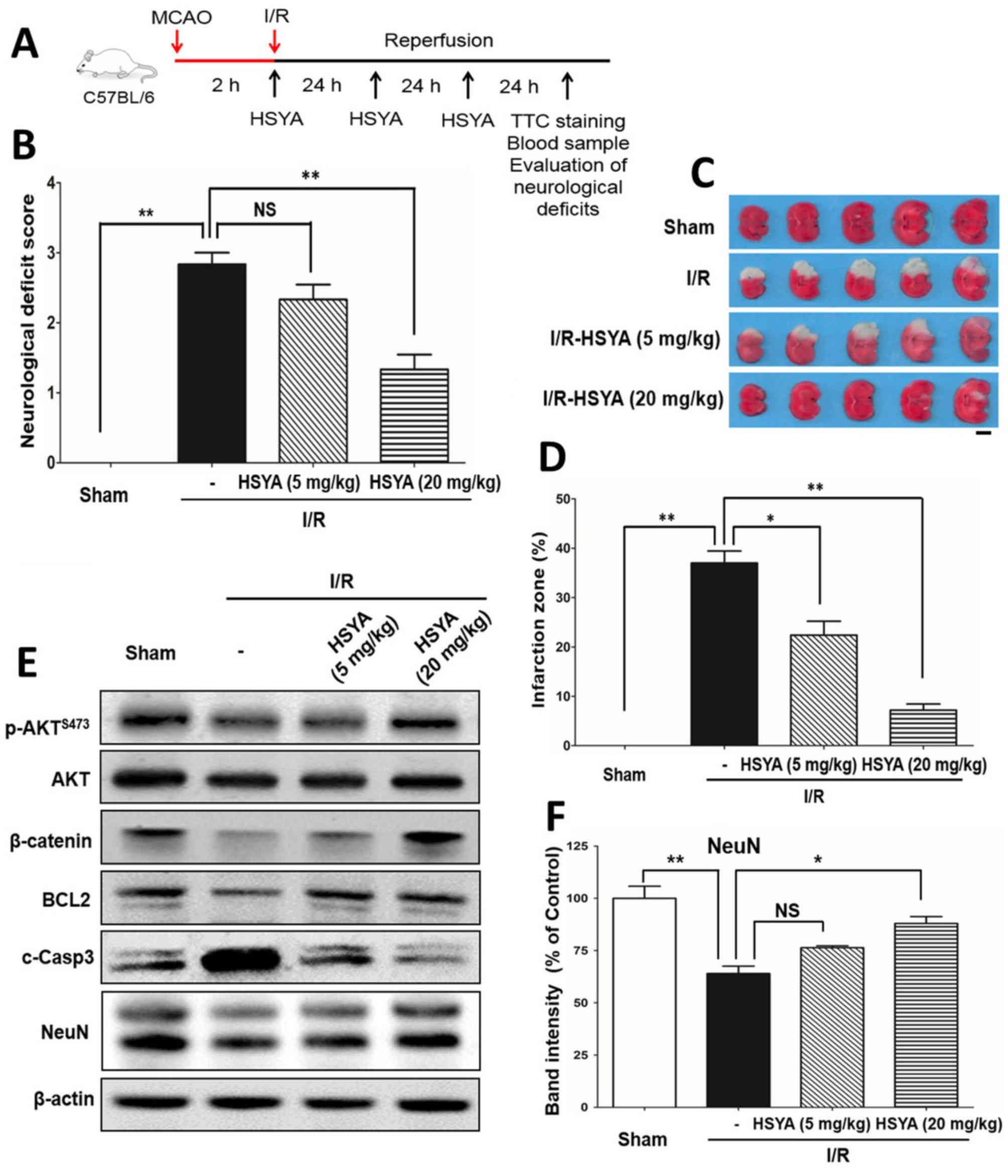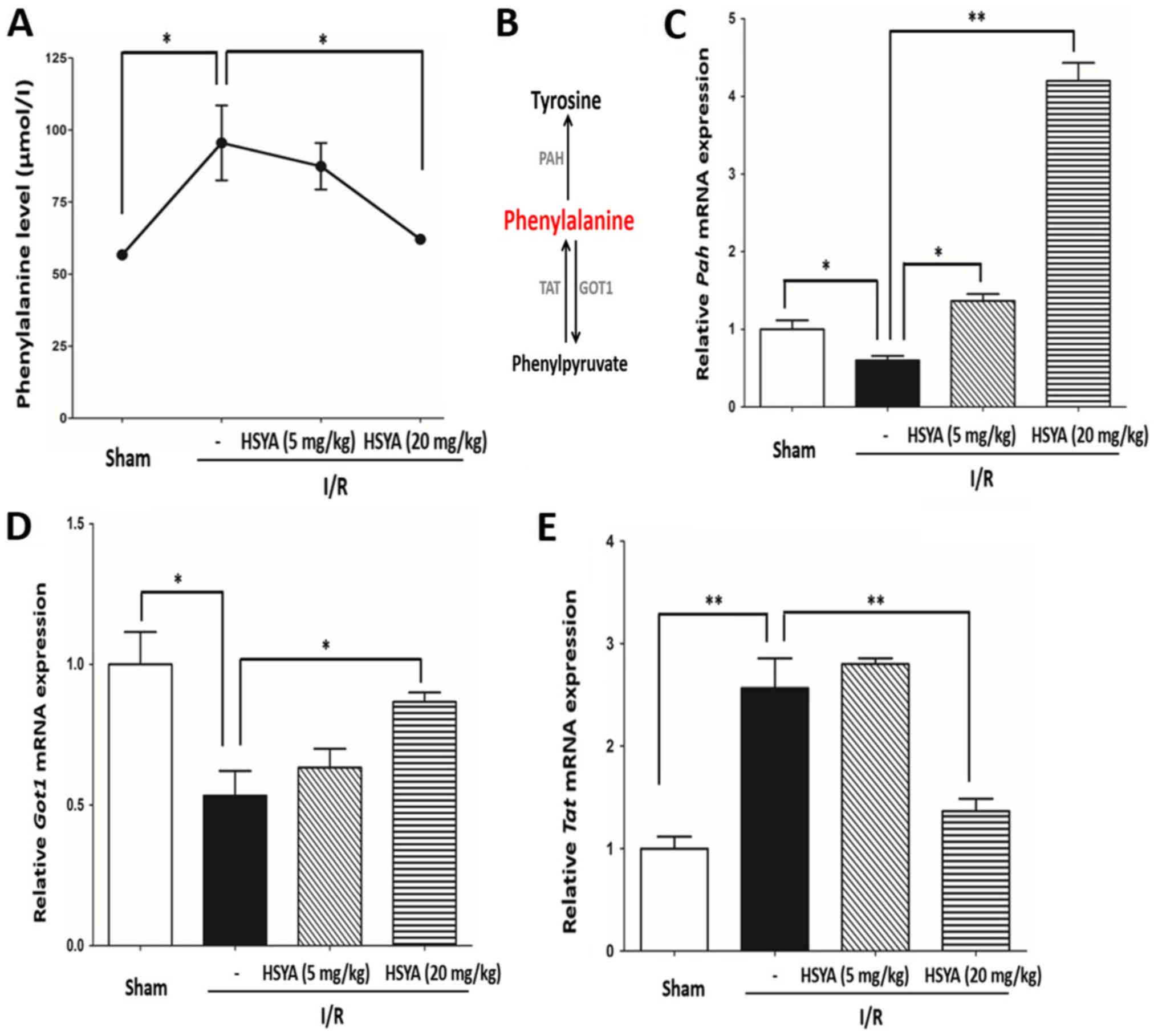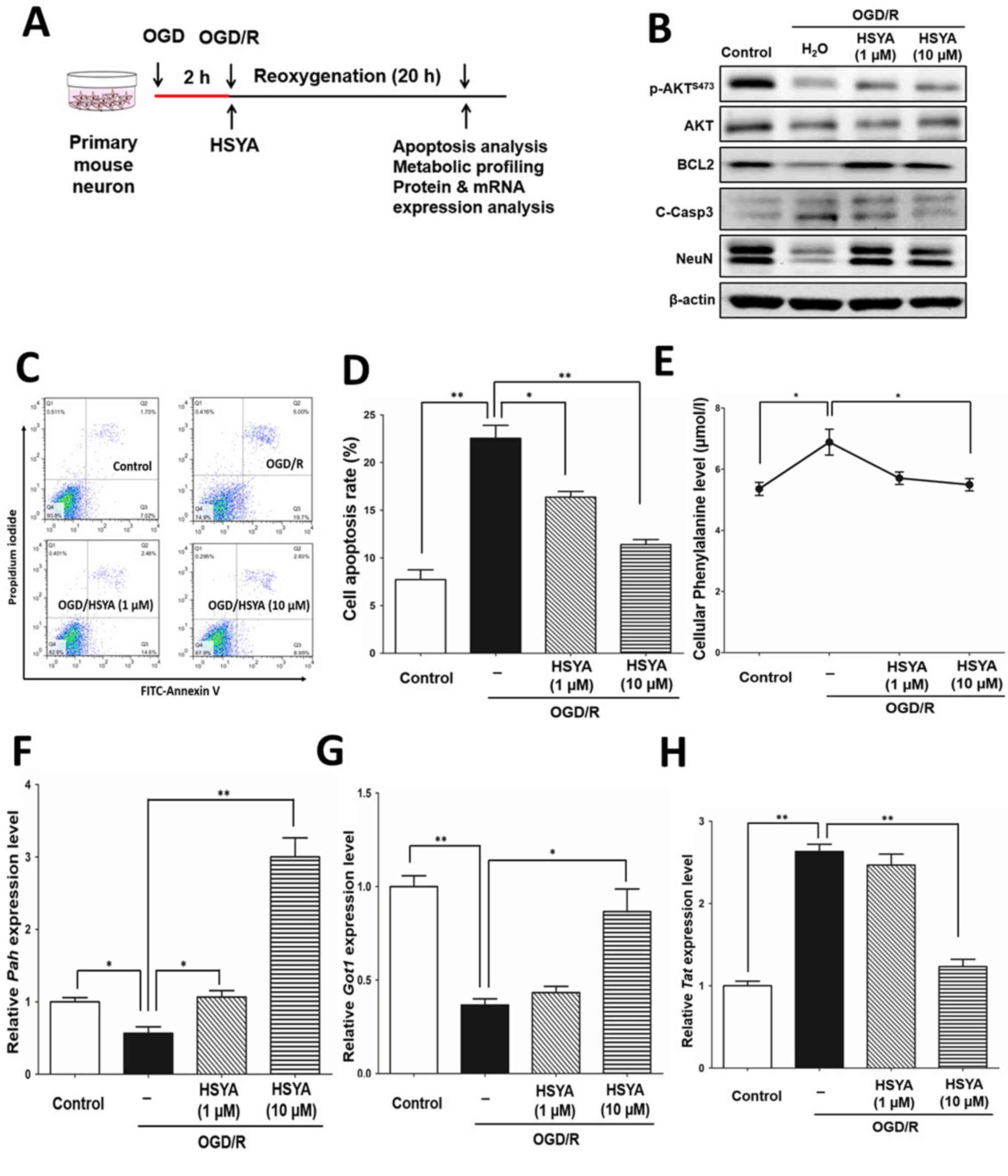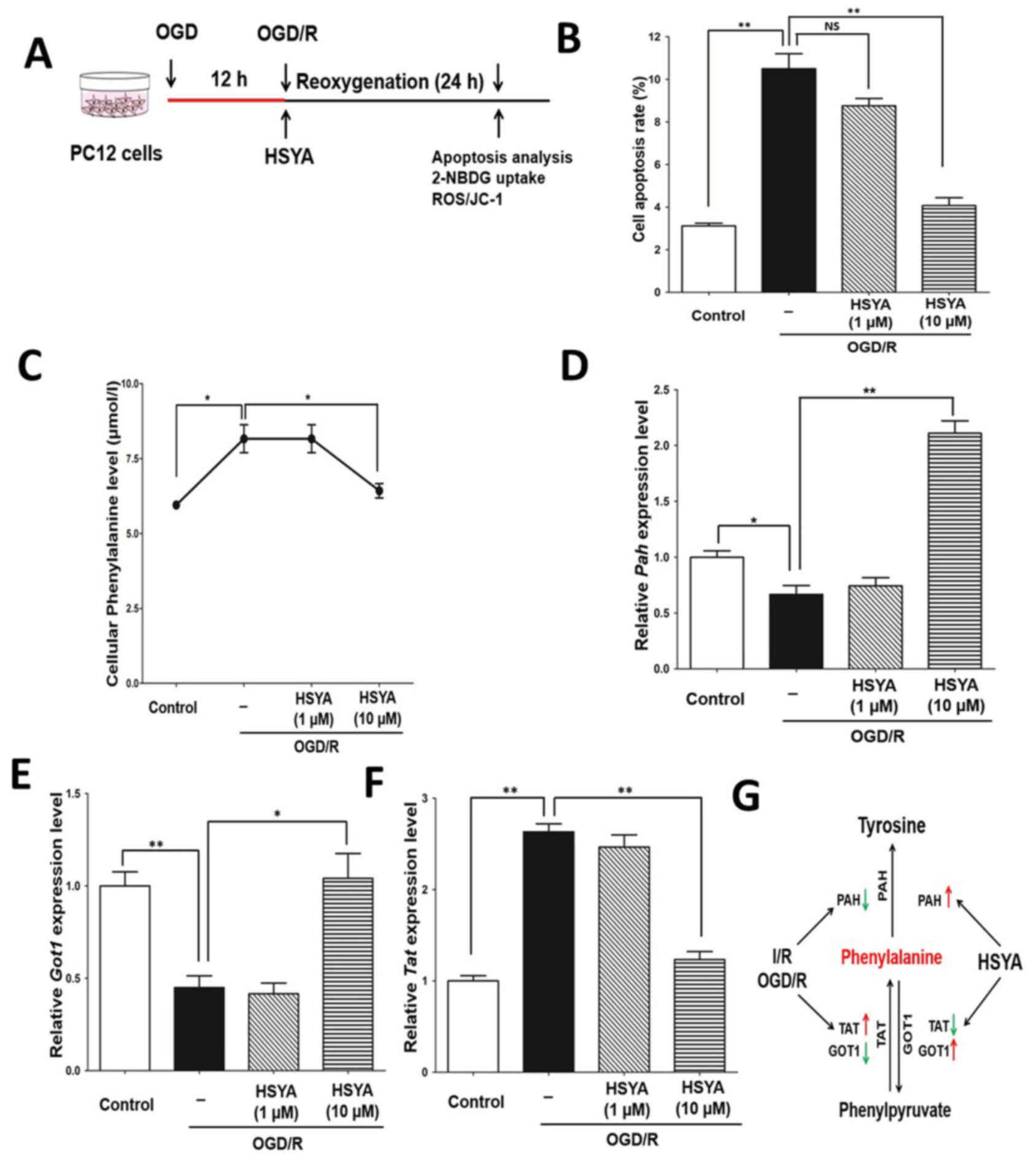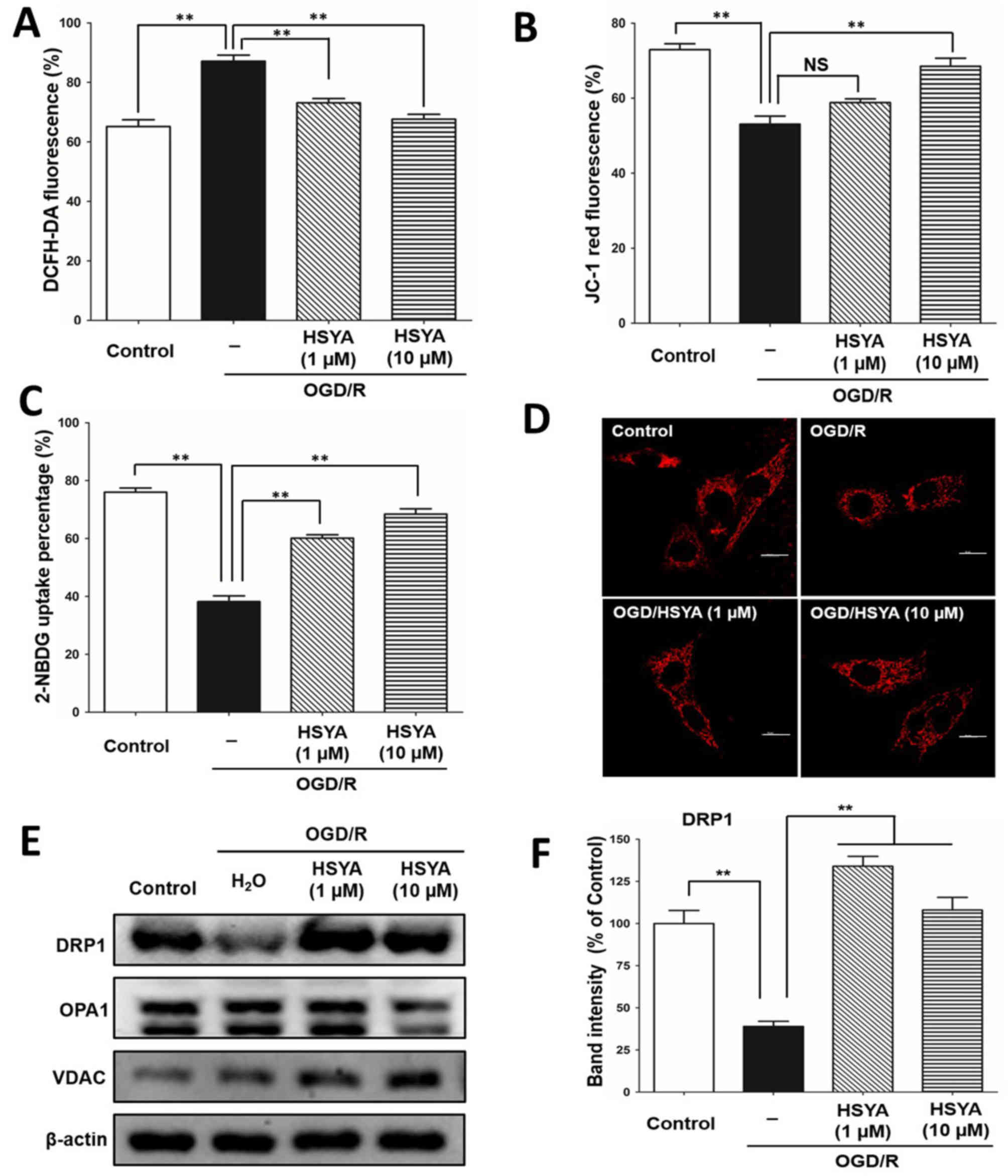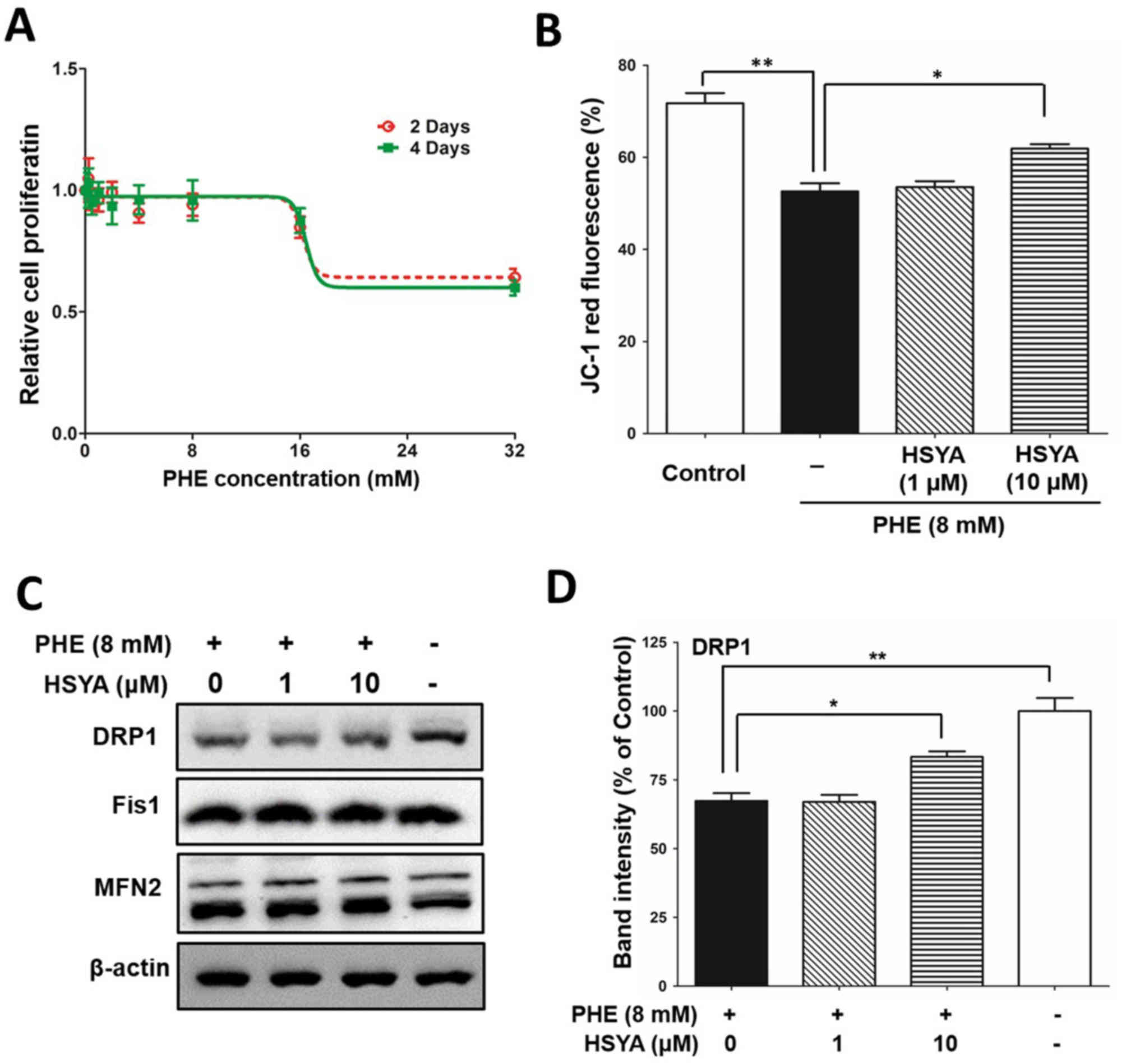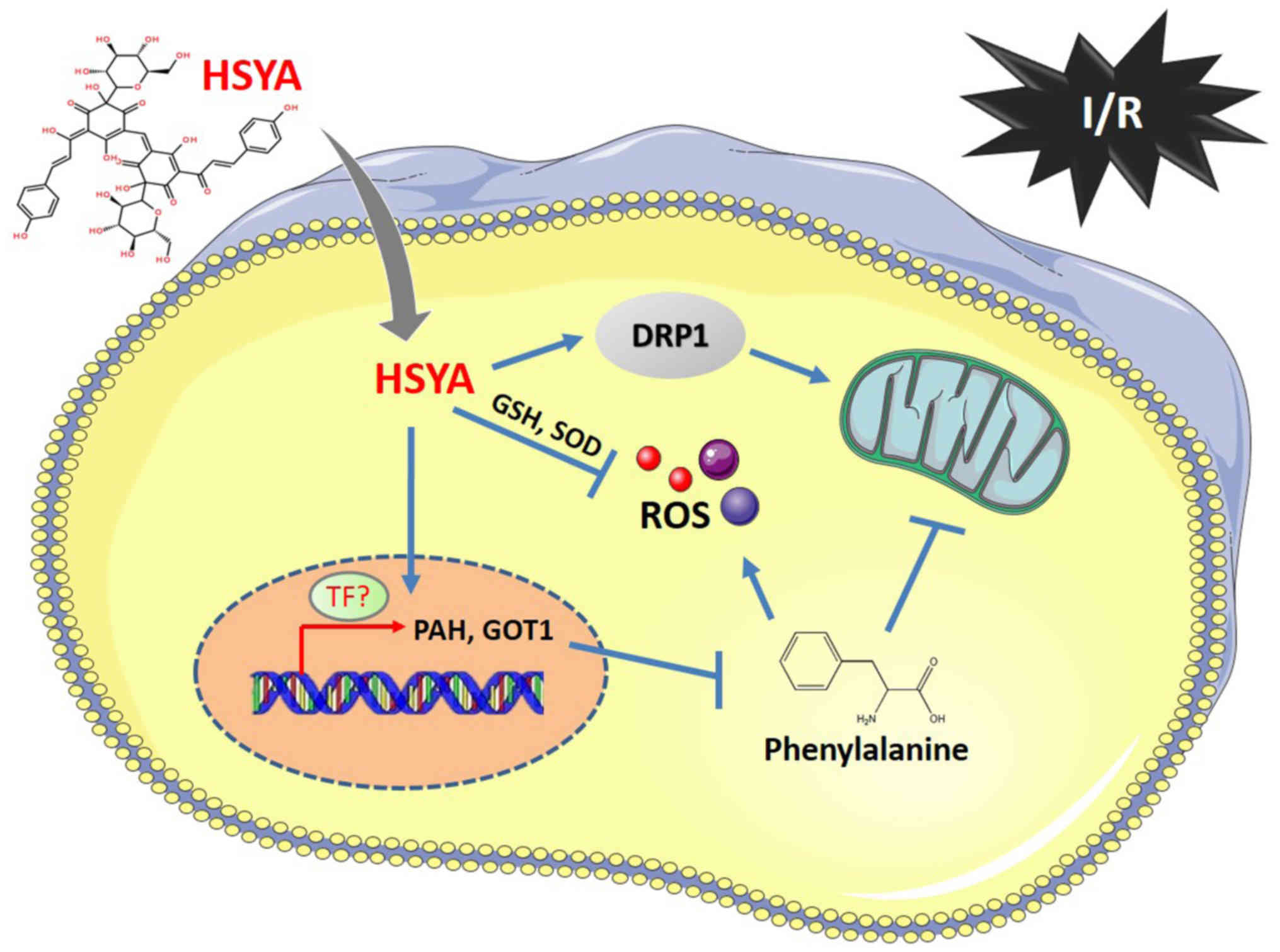|
1
|
Chu SF, Zhang Z, Zhang W, Zhang MJ, Gao Y,
Han N, Zuo W, Huang HY and Chen NH: Upregulating the expression of
Survivin-HBXIP complex contributes to the protective role of
IMM-H004 in transient global cerebral Ischemia/reperfusion. Mol
Neurobiol. 54:524–540. 2017. View Article : Google Scholar : PubMed/NCBI
|
|
2
|
Sarami Foroshani M, Sobhani ZS, Mohammadi
MT and Aryafar M: Fullerenol nanoparticles decrease blood-brain
barrier interruption and brain edema during cerebral
ischemia-reperfusion injury probably by reduction of interleukin-6
and matrix metalloproteinase-9 transcription. J Stroke Cerebrovasc
Dis. 27:3053–3065. 2018. View Article : Google Scholar : PubMed/NCBI
|
|
3
|
Wiklund L, Patnaik R, Sharma A, Miclescu A
and Sharma HS: Cerebral tissue oxidative ischemia-reperfusion
injury in connection with experimental cardiac arrest and
cardiopulmonary resuscitation: Effect of mild hypothermia and
methylene blue. Mol Neurobiol. 55:115–121. 2018. View Article : Google Scholar : PubMed/NCBI
|
|
4
|
Gong L, Tang Y, An R, Lin M, Chen L and Du
J: RTN1-C mediates cerebral ischemia/reperfusion injury via ER
stress and mitochondria-associated apoptosis pathways. Cell Death
Dis. 8:e30802017. View Article : Google Scholar : PubMed/NCBI
|
|
5
|
Li Y, Wang M and Wang S: Effect of
inhibiting mitochondrial fission on energy metabolism in rat
hippocampal neurons during ischemia/reperfusion injury. Neurol Res.
1–8. 2016.(Epub ahead of print).
|
|
6
|
Guo J, Yong Y, Aa J, Cao B, Sun R, Yu X,
Huang J, Yang N, Yan L, Li X, et al: Compound danshen dripping
pills modulate the perturbed energy metabolism in a rat model of
acute myocardial ischemia. Sci Rep. 6:379192016. View Article : Google Scholar : PubMed/NCBI
|
|
7
|
Jiang S, Shi Z, Li C, Ma C, Bai X and Wang
C: Hydroxysafflor yellow A attenuates ischemia/reperfusion-induced
liver injury by suppressing macrophage activation. Int J Clin Exp
Pathol. 7:2595–2608. 2014.PubMed/NCBI
|
|
8
|
Bai Y, Lu P, Han C, Yu C, Chen M, He F, Yi
D and Wu L: Hydroxysafflor yellow A (HSYA) from flowers of
Carthamus tinctorius L. and its vasodilatation effects on
pulmonary artery. Molecules. 17:14918–14927. 2012. View Article : Google Scholar : PubMed/NCBI
|
|
9
|
Sun L, Yang L, Xu YW, Liang H, Han J, Zhao
RJ and Cheng Y: Neuroprotection of hydroxysafflor yellow A in the
transient focal ischemia: Inhibition of protein
oxidation/nitration, 12/15-lipoxygenase and blood-brain barrier
disruption. Brain Res. 1473:227–235. 2012. View Article : Google Scholar : PubMed/NCBI
|
|
10
|
Wang X, Ma Z, Fu Z, Gao S, Yang L, Jin Y,
Sun H, Wang C, Fan W, Chen L, et al: Hydroxysafflor Yellow A
protects neurons from excitotoxic death through Inhibition of
NMDARs. ASN Neuro. 8(pii)2016.
|
|
11
|
Li CY, Yin JG, Zhang J, Wang XX, Xu MJ,
Liu F, Zou JD and Ju WZ: Pharmacokinetic profiles of hydroxysafflor
yellow A following intravenous administration of its pure
preparations in healthy Chinese volunteers. J Ethnopharmacol.
162:225–230. 2015. View Article : Google Scholar : PubMed/NCBI
|
|
12
|
Svensson RU and Shaw RJ: Cancer
metabolism: Tumour friend or foe. Nature. 485:590–591. 2012.
View Article : Google Scholar : PubMed/NCBI
|
|
13
|
Zhao Q, Wu J, Hua Q, Lin Z, Ye L, Zhang W,
Wu G, Du J, Xia J, Chu M and Hu X: Resolvin D1 mitigates energy
metabolism disorder after ischemia-reperfusion of the rat lung. J
Transl Med. 14:812016. View Article : Google Scholar : PubMed/NCBI
|
|
14
|
Hoehn RS, Seitz AP, Jernigan PL, Gulbins E
and Edwards MJ: Ischemia/Reperfusion injury alters sphingolipid
metabolism in the gut. Cell Physiol Biochem. 39:1262–1270. 2016.
View Article : Google Scholar : PubMed/NCBI
|
|
15
|
Gellert L, Knapp L, Nemeth K, Herédi J,
Varga D, Oláh G, Kocsis K, Menyhárt A, Kis Z, Farkas T, et al:
Post-ischemic treatment with L-kynurenine sulfate exacerbates
neuronal damage after transient middle cerebral artery occlusion.
Neuroscience. 247:95–101. 2013. View Article : Google Scholar : PubMed/NCBI
|
|
16
|
Kimberly WT, Wang Y, Pham L, Furie KL and
Gerszten RE: Metabolite profiling identifies a branched chain amino
acid signature in acute cardioembolic stroke. Stroke. 44:1389–1395.
2013. View Article : Google Scholar : PubMed/NCBI
|
|
17
|
Song Y, Long L, Zhang N and Liu Y:
Inhibitory effects of hydroxysafflor yellow A on PDGF-BB-induced
proliferation and migration of vascular smooth muscle cells via
mediating Akt signaling. Mol Med Rep. 10:1555–1560. 2014.
View Article : Google Scholar : PubMed/NCBI
|
|
18
|
Rodriguez B, Torres N, Rincon AR, Bourges
H, Panduro A and Tovar AR: Hepatic phenylalanine-hydroxylase and
tyrosine-aminotransferase mRNA levels in rats adapted to diets with
different concentrations of protein. Rev Invest Clin. 48:413–419.
1996.PubMed/NCBI
|
|
19
|
Zhang J, Li F, Liu X, Shen L, Liu J, Su J,
Zhang W, Deng Y, Wang L, Liu N, et al: The repression of human
differentiation-related gene NDRG2 expression by Myc via
Miz-1-dependent interaction with the NDRG2 core promoter. J Biol
Chem. 281:39159–39168. 2006. View Article : Google Scholar : PubMed/NCBI
|
|
20
|
Ganan-Gomez I, Wei Y, Yang H,
Boyano-Adanez MC and Garcia-Manero G: Oncogenic functions of the
transcription factor Nrf2. Free Radic Biol Med. 65:750–764. 2013.
View Article : Google Scholar : PubMed/NCBI
|
|
21
|
Wu Y, Wang L, Dai C, Ma G, Zhang Y, Zhang
X and Wu Z: Neuroprotection by platelet-activating factor
acetylhydrolase in a mouse model of transient cerebral ischemia.
Neurosci Lett. 558:26–30. 2014. View Article : Google Scholar : PubMed/NCBI
|
|
22
|
Hu Z, Yang B, Mo X and Zhou F: HspB8
mediates neuroprotection against OGD/R in N2A cells through the
phosphoinositide 3-kinase/Akt pathway. Brain Res. 1644:15–21. 2016.
View Article : Google Scholar : PubMed/NCBI
|
|
23
|
Livak KJ and Schmittgen TD: Analysis of
relative gene expression data using real-time quantitative PCR and
the 2(-Delta Delta C(T)) method. Methods. 25:402–408. 2001.
View Article : Google Scholar : PubMed/NCBI
|
|
24
|
Chazotte B: Labeling mitochondria with
JC-1. Cold Spring Harbor Protoc. 2011(pii): pdb.prot065490.
2011.
|
|
25
|
Liu L, Huang W, Wang J, Song H, Cen J and
Ji B: Anthraquinone derivative exerted hormetic effect on the
apoptosis in oxygen-glucose deprivation-induced PC12 cells via ERK
and Akt activated Nrf2/HO-1 signaling pathway. Chem Biol Interact.
262:1–11. 2017. View Article : Google Scholar : PubMed/NCBI
|
|
26
|
Yang JL, Mukda S and Chen SD: Diverse
roles of mitochondria in ischemic stroke. Redox Biol. 16:263–275.
2018. View Article : Google Scholar : PubMed/NCBI
|
|
27
|
Winterholler M, Hollander C, Kerling F,
Weber I, Dittrich S, Türk M and Schröder R: Stroke in duchenne
muscular dystrophy: A retrospective longitudinal study in 54
patients. Stroke. 47:2123–2126. 2016. View Article : Google Scholar : PubMed/NCBI
|
|
28
|
Morris NA, Merkler AE, Gialdini G and
Kamel H: Timing of incident stroke risk after cervical artery
dissection presenting without ischemia. Stroke. 48:551–555. 2017.
View Article : Google Scholar : PubMed/NCBI
|
|
29
|
Liu Y, Luo F, Xu Y, Wang B, Zhao Y, Xu W,
Shi L, Lu X and Liu Q: Epithelial-mesenchymal transition and cancer
stem cells, mediated by a long non-coding RNA, HOTAIR, are involved
in cell malignant transformation induced by cigarette smoke
extract. Toxicol Appl Pharmacol. 282:9–19. 2015. View Article : Google Scholar : PubMed/NCBI
|
|
30
|
Wei G, Yin Y, Duan J, Guo C, Zhu Y, Wang
Y, Xi M and Wen A: Hydroxysafflor yellow A promotes
neovascularization and cardiac function recovery through
HO-1/VEGF-A/SDF-1α cascade. Biomed Pharmacother. 88:409–420. 2017.
View Article : Google Scholar : PubMed/NCBI
|
|
31
|
Hartwig C, Gal A, Santer R, Ullrich K,
Finckh U and Kreienkamp HJ: Elevated phenylalanine levels interfere
with neurite outgrowth stimulated by the neuronal cell adhesion
molecule L1 in vitro. FEBS Lett. 580:3489–3492. 2006. View Article : Google Scholar : PubMed/NCBI
|
|
32
|
Bockler S, Chelius X, Hock N, Klecker T,
Wolter M, Weiss M, Braun RJ and Westermann B: Fusion, fission, and
transport control asymmetric inheritance of mitochondria and
protein aggregates. J Cell Biol. 216:2481–2498. 2017. View Article : Google Scholar : PubMed/NCBI
|



